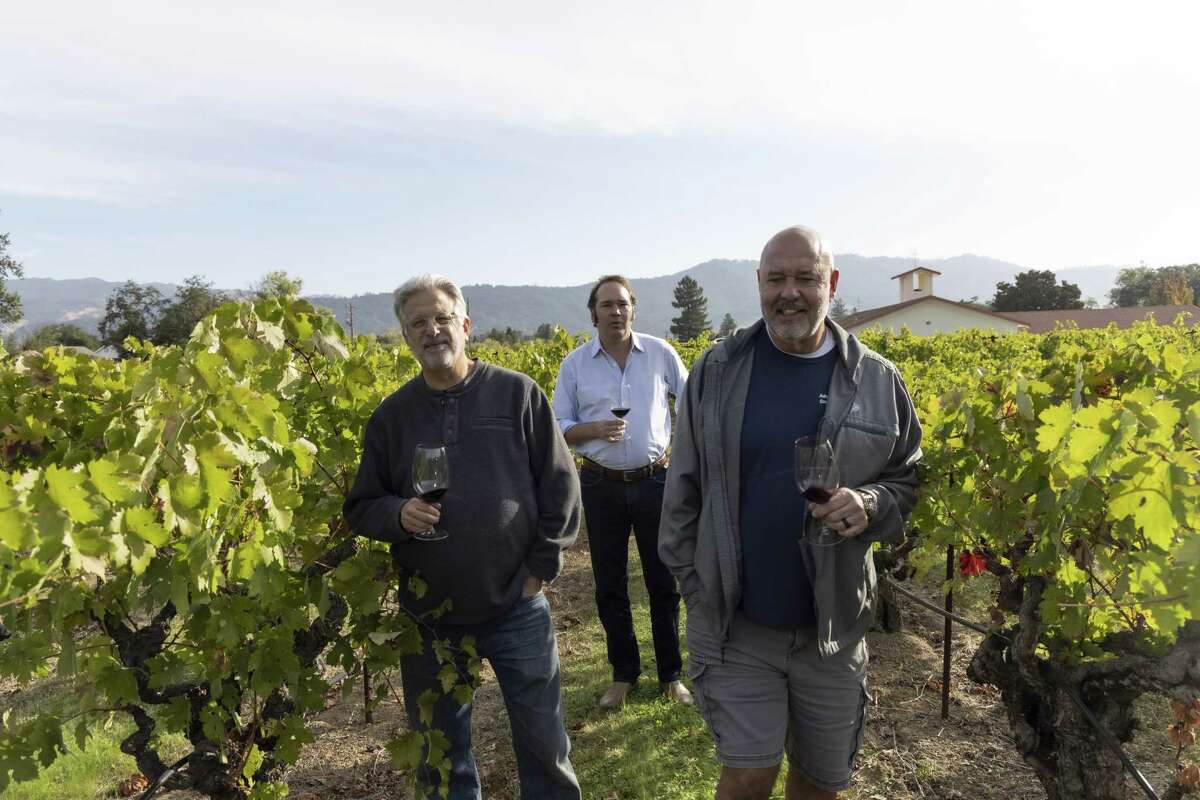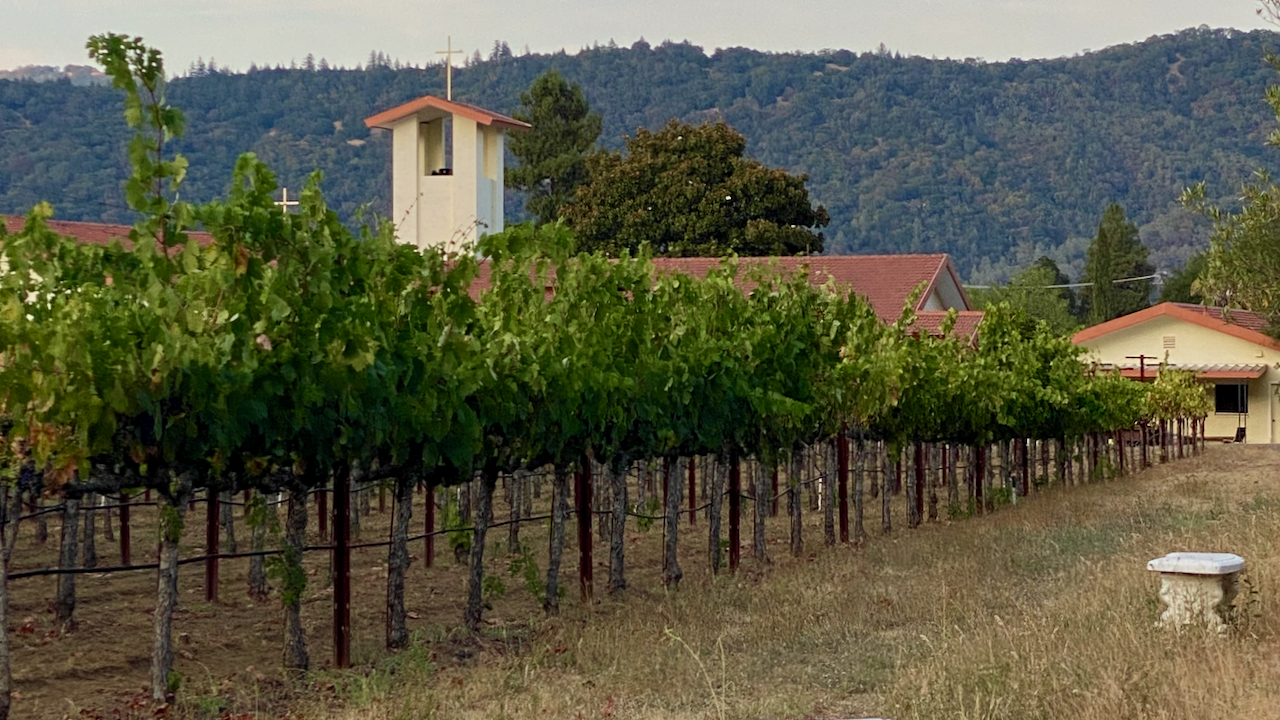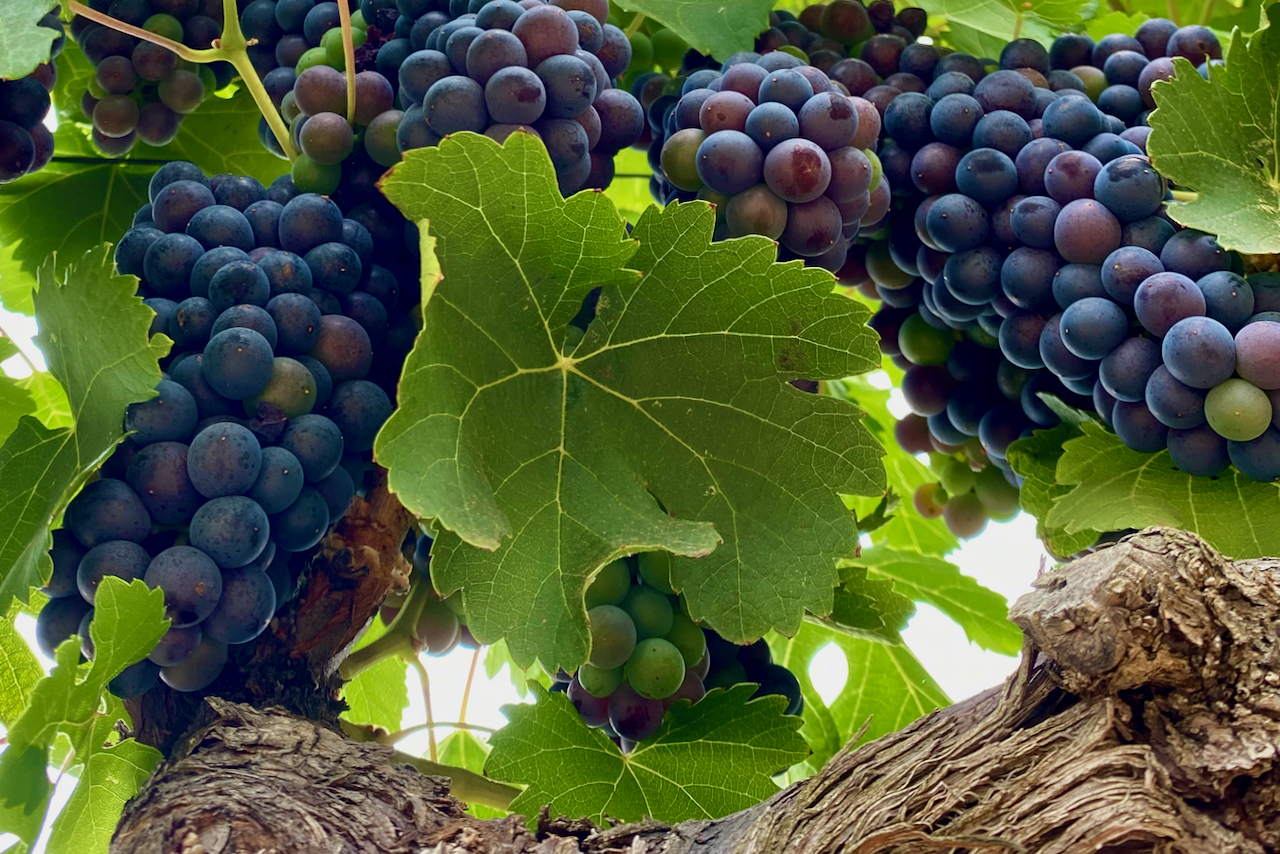Our 100 most amazing Sonoma County wines in 2022
2018 Domaine des Chirats Rockpile Vineyard Rockpile Syrah ($95)
Linda Murphy - Dec. 16, 2022
Expensive? You bet. Amazing? Yes. Interesting story behind it? Of course. Jeff Cohn, maker of excellent big-bodied syrahs, zinfandels and Rhone-style blends, collaborates on each vintage of this wine with Yves Cuilleron, a noted vigneron in France’s northern Rhone Valley. It’s made in Sonoma County, from grapes grown in the Rockpile AVA in the northwest part of the county (“chirats” is French for “pile of granite stones”). It’s amusing wordplay, though with an authentic partnership and serious intent. That’s reflected in the price. The wine is deep purple in color, with voluptuous, mouth-coating black and blue fruit and classic syrah savoriness. Despite its concentration, it’s finely balanced, with what Cohn calls “a liquid mineral component that is the essence of Rockpile Vineyard.” Too rich for your blood? Then look to the 2018 El Diablo Vineyard Russian River Valley Grenache ($50), a pretty, firmly structured red that’s lip-smacking good.
Checkout the100 Most Amazing Wines list
Read more wine reviews by Linda Murphy
How a church’s tiny vineyard launched one of Sonoma's most prized wine regions
Jess Lander - Oct. 31, 2022
Behind a modest Catholic church in Sonoma County sits a little-known vineyard that’s also one of the most influential in California.
The beefy, gnarly and 130-year-old vines of Cloverdale’s St. Peter’s Church Vineyard are the unsung heroes of the Rockpile region, an appellation known for producing intensely flavored Zinfandels that rank among the best in the world.
The vineyard had an unlikely rise to fame. Clocking in at only 5 acres, it’s in a northwest Sonoma County city that’s not exactly in the lexicon of notable Wine Country towns. The oldest vines on the acreage were planted in the 1880s; it’s unclear when the church assumed ownership of the vineyard.
Photo credit: Rachel Bujalski/Special to The Chronicle (l-r: Jeff, Josh, Russell)
It took more than 100 years for the site to make a name for itself. In the early 1990s, St. Peter’s Church parishioner Jack Florence Jr. was starting out in vineyard management and convinced the pastor to let him take over the farming. He wanted to sell the grapes to more reputable wine programs, and in 1994, he landed a breakout deal with the vanguard Zinfandel producer Rosenblum Cellars in Alameda.
Founder Kent Rosenblum, who led the country’s modern day Zinfandel boom in the 1980s, started to produce a limited bottling of St. Peter’s Church Zinfandel that was an immediate hit. “It couldn’t have fallen into better hands than Kent’s,” said Florence. “He really was the first one to put it on the map.”
That same year, Florence, along with his longtime partner and renowned California vineyard manager Ulises Valdez Sr., planted the first St. Peter’s Church franchise vineyard. He transported cuttings (also known as a clone) from the old vineyard and budded them over rootstock high in the rugged and remote hills of Dry Creek Valley to the west. It was one of the first modern day plantings in what later became the Rockpile appellation.
When Florence’s neighbors noticed his success, they proceeded to plant other vineyards nearby — perhaps most notably, the Boticelli vineyard — also with St. Peter’s budwood. Soon, Rockpile formed its identity as the land of big and brawny Zinfandels. No longer viewed as an extension of the Dry Creek Valley, the region received its official designation in 2002. Today, Rockpile is one of the smallest wine regions in the country with roughly 160 acres of vineyards that overlook Lake Sonoma.
“It kind of jumpstarted the appellation because wines from this area were all Zinfandel and it was all the same clone,” said Florence. “There was consistency. People immediately knew what they were getting with Rockpile.”
Rockpile vines are planted at elevations ranging from 800 to 2,100 feet. They benefit from a winemaker’s dream combination of ample sunlight above the fog, and cool temperatures from the lake and other maritime influences, which allow for a long and slow ripening.
But when it comes to dissecting Rockpile’s fame, the region’s pioneers, like Florence, give most of the credit to the St. Peter’s Church clone.
Words like “dense,” “concentrated,” “dark” and “intense” are commonly used to describe the clone. Winemaker Jeff Cohn, who used to make wine for Rosenblum and still sources a small amount of fruit from the original St. Peter’s Church vineyard for his personal label, pointed to notes of black cherry, tarragon and black licorice.
“It ages incredibly well,” he said. “It’s a hotter area, and sometimes in those hot areas, wines don’t age as well, but this wine just continues to live on.”
For the past four years, most of the vineyard’s Zinfandel has gone to Napa’s Elyse Winery, which specializes in both Zinfandel and old vines. “It has these awesome textures, like when you lick the roof of your mouth and it’s almost slippery,” said Elyse winemaker Russell Bevan. “The complexity is magical. Take a sip and you think there must be a slice of pumpkin pie somewhere nearby.”
The original vines still seem to have plenty of vintages left in them, despite their advanced age. Century-old vineyards are most prevalent throughout Europe and are believed to produce more complex and concentrated wines. But in California, vines are customarily ripped out after 20-25 years when their crop yields begin to decline. While old vines are more susceptible to disease, the St. Peter’s Church vines are healthy and have remained mostly disease-free. The vineyard doesn’t suffer from the prevalent vine disease leafroll, for example. Leafroll causes leaves to curl downward and turn a fall-like color — dark red for red grapes, yellow for white — which can lead to a reduction in yields, delayed or uneven ripening and can impact overall grape quality.
Cohn believes this vineyard has been spared because it was planted before the prevalence of leafroll. Bevan views its continued productivity as an act of survival: by continuing to produce flavorful berries, the vine hopes to attract animals and propagate itself. “That vineyard knows it’s near death,” said Bevan. “It’s the example of something clinging to life.”
But, there could be other forces at work, Cohn mused — like the church. The vineyard is surrounded by stone benches that represent the Stations of the Cross, symbolizing Jesus’s path to the cross on his crucifixion day.
It’s a simple, unassuming place. “You look at it and go, ‘Eh, it’s OK,’” said Cohn. “It doesn't look spectacular, but it just seems like there’s something going on, like somebody, somewhere has mystical forces to create incredible wines from that vineyard.”
Leave comment on the Chronicle article or read more wine news
Jess Lander is a San Francisco Chronicle staff writer, jess.lander@sfchronicle.com
The 100 most amazing wines in Sonoma County
It's a fantastic list and I am delighted that the Rossi GSM was included!
Jeff Cohn Cellars 2018 Rossi Ranch Organic Heritage Vineyard Sonoma Valley GSM ($55)
GSMs are blends of grenache, syrah and mourvedre, and Jeff Cohn nails it on this wine. His is a bold, potent black-fruited wine laced with black pepper, sage and bergamot, and with sizeable yet also mature tannins that make it very drinkable now and for the next five or more years.
Checkout the100 Most Amazing Wines list
Read more wine reviews by Linda Murphy
Two 99-point 2018 Rockpile Syrahs
Buffalo Hill
99 Another killer Syrah from Cohn that flirts with perfection, the 2018 Syrah Buffalo Hill Rockpile comes from a single vineyard in the Rockpile AVA of Sonoma, and I always find an incredible Hermitage-like character in this cuvée. Deep purple, with a primordial bouquet of crème de cassis and blackberry fruits as well as graphite, scorched earth, bacon fat, and violets, it hits the palate with full-bodied richness, a layered, multi-dimensional texture, massive amounts of fruit, and a finish that won't quit. It's not for those seeking lightweight aromas and flavors but it nevertheless stays beautifully balanced, has ultra-fine tannins, and a great finish. It will evolve effortlessly for 15 years or more.
So Serine
99 Coming all from the Rockpile Vineyard in the Rockpile AVA inside the Larger Sonoma County appellation, the 2018 Syrah So Serine sports a deep purple hue to go with a straight-up thrilling bouquet of blueberries, blackberries, smoked game, bacon fat, and spring flowers. Powerful, full-bodied, deep, and intense, it nevertheless stays light on its feet and graceful. A thrill a second, this remarkable Syrah comes close to topping out my scale. Hats off to Jeff Cohn!
Read the other 2018 reviews
You know you want to be
in the Cohn Zone
Enter your email address to keep up to date on the latest wine releases, events, and promotions.






